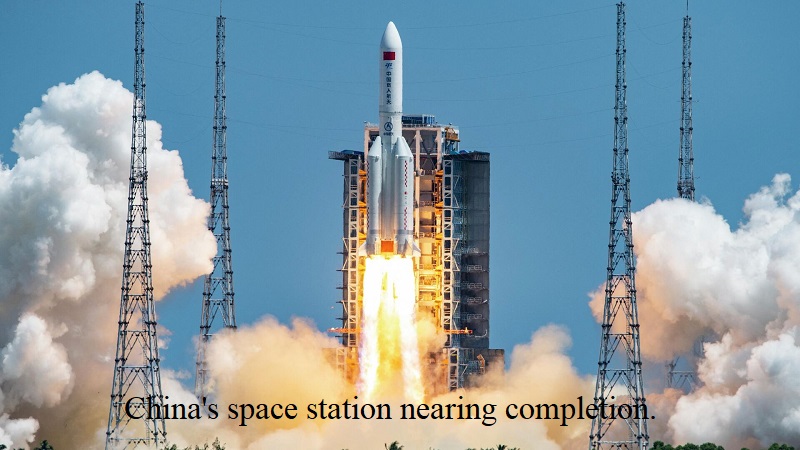
A new scientific lab has docked with China’s Tiangong space station, marking a significant development in the country’s space programme and pushing it closer to international competition. At 3:13 a.m. on Monday, the Wentian module docked with the main Tianhe dwelling module of the Tiangong station, according to the China Manned Space Agency.
Wentian, the second of three modules for its permanent space station, was launched from the Wenchang Space Launch Center on the southern island of Hainan using China’s most potent rocket, the Long March 5B. Nearly 13 hours after launch, the spacecraft arrived at its destination.
About 10 minutes after the launch, the Wentian split from the rocket to the cheers and applause of space agency personnel watching the launch from a control room on the live feed. The launch was ‘a complete success’, CCTV reported shortly after.
According to the state-owned Global Times, the Wentian is intended for research and biology investigations, and the 23-ton lab module is heavier than any other single-module spacecraft currently in orbit. A second lab module, the Mengtian, scheduled for introduction in October, will come after it.
Three astronauts who are currently on a six-month mission and residing in the core module oversaw the Wentian’s arrival and docking.
Since the Chinese space station started its construction, this was the third such launch. The crewed spacecraft Shenzhou-14 and Tianzhou-class freight spacecraft came before it. In April 2021, China launched the Tianhe module, which houses the station’s primary living quarters, on the first of 11 crewed and uncrewed missions in the undertaking.
WHAT IS CHINA’S WENTIAN MODULE?
Along with the other lab module that has not yet been launched, the Mengtian, the 17.9 metres (59 feet) long Wentian lab module will be where astronauts can conduct scientific research (“Dreaming of the Heavens”). When the station is finished, an airlock cabin on Wentian will serve as the primary exit-entry point for extravehicular activities. The space, which was built to house just three astronauts permanently, will also be used as temporary living quarters for astronauts during crew rotations. According to the state-owned Global Times, the Wentian is intended for research and biology investigations, and the 23-ton lab module is heavier than any other single-module spacecraft currently in orbit.
In the meantime, the Mengtian module, which will launch in October and dock with Tianhe to form a T-shaped structure, is similar to Wentian. President Xi Jinping’s ten years as head of the Communist Party of China will come to an end with the completion of the structure, which makes up nearly a fifth of the International Space Station (ISS) in terms of mass and is a source of pride for the average Chinese person.
The People’s Liberation Army, the military component of the ruling Communist Party, oversees China’s space programme, which has mostly advanced with the Tiangong programme without outside support. Because of its military links, the US denied China access to the International Space Station.

Post Your Comments